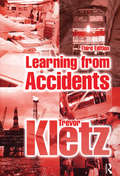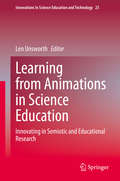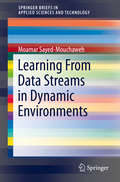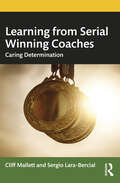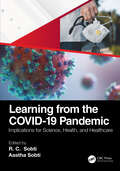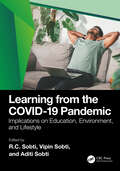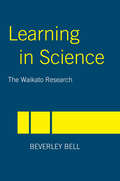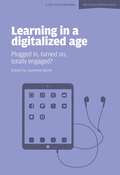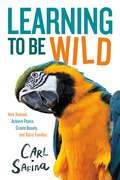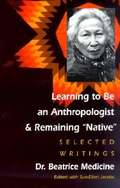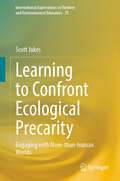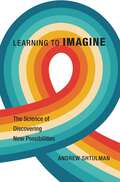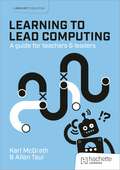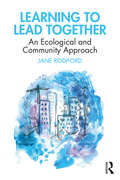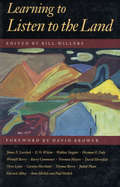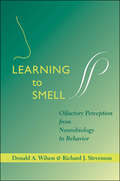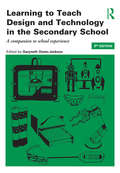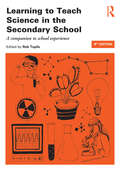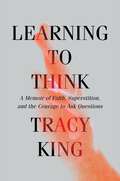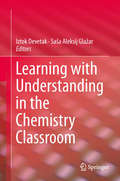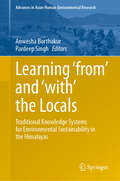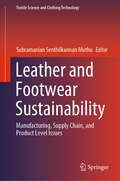- Table View
- List View
Learning from Accidents
by Trevor KletzReview of previous edition:"Trevor Kletz's book makes an invaluable contribution to the systematic, professional and scientific approach to accident investigation". The Chemical Engineer Fully revised and updated, the third edition of Learning from Accidents provides more information on accident investigation, including coverage of accidents involving liquefied gases, building collapse and other incidents that have occurred because faults were invisible (e.g. underground pipelines).By analysing accidents that have occurred Trevor Kletz shows how we can learn and thus be better able to prevent accidents happening again. Looking at a wide range of incidents, covering the process industries, nuclear industry and transportation, he analyses each accident in a practical and non-theoretical fashion and summarises each with a chain of events showing the prevention and mitigation which could have occurred at every stage. At all times Learning from Accidents, 3rd Edition emphasises cause and prevention rather than human interest or cleaning up the mess. Anyone involved in accident investigation and reporting of whatever sort and all those who work in industry, whether in design, operations or loss prevention will find this book full of invaluable guidance and advice.
Learning from Animations in Science Education: Innovating in Semiotic and Educational Research (Innovations in Science Education and Technology #25)
by Len UnsworthThis book examines educational semiotics and the representation of knowledge in school science. It discusses the strategic integration of animation in science education. It explores how learning through the creation of science animations takes place, as well as how animation can be used in assessing student’s science learning. Science education animations are ubiquitous in a variety of different online sites, including perhaps the most popularly accessed YouTube site, and are also routinely included as digital augmentations to science textbooks. They are popular with students and teachers and are a prominent feature of contemporary science teaching. The proliferation of various kinds of science animations and the ready accessibility of sophisticated resources for creating them have emphasized the importance of research into various areas: the nature of the semiotic construction of knowledge in the animation design, the development of critical interpretation of available animations, the strategic selection and use of animations to optimize student learning, student creation of science animations, and using animation in assessing student science learning. This book brings together new developments in these research agendas to further multidisciplinary perspectives on research to enhance the design and pedagogic use of animation in school science education. Chapter 1 is available open access under a Creative Commons Attribution 4.0 International License via link.springer.com.
Learning from Data Streams in Dynamic Environments
by Moamar Sayed-MouchawehThis book addresses the problems of modeling, prediction, classification, data understanding and processing in non-stationary and unpredictable environments. It presents major and well-known methods and approaches for the design of systems able to learn and to fully adapt its structure and to adjust its parameters according to the changes in their environments. Also presents the problem of learning in non-stationary environments, its interests, its applications and challenges and studies the complementarities and the links between the different methods and techniques of learning in evolving and non-stationary environments.
Learning from Leonardo: Decoding the Notebooks of a Genius
by Fritjof CapraLeonardo da Vinci was a brilliant artist, scientist, engineer, mathematician, architect, inventor, writer, and even musician—the archetypal Renaissance man. But he was also, Fritjof Capra argues, a profoundly modern man. Not only did Leonardo invent the empirical scientific method over a century before Galileo and Francis Bacon, but Capra’s decade-long study of Leonardo’s fabled notebooks reveal him as a systems thinker centuries before the term was coined. He believed the key to truly understanding the world was in perceiving the connections between phenomena and the larger patterns formed by those relationships. This is precisely the kind of holistic approach the complex problems we face today demand. Capra describes seven defining characteristics of Leonardo da Vinci’s genius and includes a list of over forty discoveries Leonardo made that weren’t rediscovered until centuries later. Leonardo pioneered entire fields—fluid dynamics, theoretical botany, aerodynamics, embryology. Capra’s overview of Leonardo’s thought follows the organizational scheme Leonardo himself intended to use if he ever published his notebooks. So in a sense, this is Leonardo’s science as he himself would have presented it. Leonardo da Vinci saw the world as a dynamic, integrated whole, so he always applied concepts from one area to illuminate problems in another. For example, his studies of the movement of water informed his ideas about how landscapes are shaped, how sap rises in plants, how air moves over a bird’s wing, and how blood flows in the human body. His observations of nature enhanced his art, his drawings were integral to his scientific studies, and he brought art and science together in his extraordinarily beautiful and elegant mechanical and architectural designs. Obviously, we can’t all be geniuses on the scale of Leonardo da Vinci. But by exploring the mind of the preeminent Renaissance genius, we can gain profound insights into how best to address the challenges of the 21st century.
Learning from Serial Winning Coaches: Caring Determination
by Cliff Mallett Sergio Lara-BercialLearning from Serial Winning Coaches provides performance coaches and directors, coach developers, and researchers with the knowledge and tools to affirm and challenge policy and practice and conduct further research to inform future policy and practice in the identification, recruitment, and development of performance coaches. Leading an athlete or team to an Olympic or world championship gold medal or professional league title is a great achievement for a coach; a dream that comes true for a small group of privileged coaches. This outstanding accomplishment can become the defining moment of their careers. Winning multiple golds and championships with different athletes or teams, and across multiple major events spanning decades, is the prerogative of an exclusive club of coaches. This book reveals the secrets, experiences, and practices of 17 of these coaches across 10 sports and 10 different countries. Through a combination of in-depth interviews with the coaches and their athletes and a detailed analysis of their personality and motivational profiles, Mallett and Lara-Bercial offer a unique portrait of the day-to-day workings of these coaches: who they are, how they operate, their leadership style, and their inimitable and often serendipitous journeys to the top of the sporting world. Learning from Serial Winning Coaches goes beyond the description of isolated coaching behaviours provided by previous research to explore the personal realities of these exceptional men and women, coaches, and athletes. The emerging multi-dimensional picture sheds light on the unique conditions and practices that lead to the unparalleled success of these true outliers. This book is key reading for researchers, coaching and coaching psychology students, performance coaches and directors, and coach developers, providing a novel evidence-based theoretical framework to conduct further research, shape and reshape coach development, and facilitate the identification and recruitment of the next generation of serial winners.
Learning from the COVID-19 Pandemic: Implications for Science, Health, and Healthcare
by Aastha Sobti R. C SobtiCOVID-19 was first identified in Wuhan City in December 2019 and spread throughout Hubei Province and other parts of China. After causing significant morbidity and mortality in China, by February 2020, it had spread to numerous other countries, infecting millions of people and causing a large number of deaths across the world. The COVID-19 pandemic put a burden on almost all areas of the world including healthcare systems, education, industry, travel, etc. The pandemic revealed the vulnerability of the world’s healthcare systems and affected healthcare personnel significantly. The virus is able to attack not only the respiratory tract, but almost all the organs including the brain. Impacts on gut biota have also been noticed. The virus has caused both morbidity and mortality in humans without any geographical, cultural, or religious barriers. The emergence of new variants due to mutations in the virus has aggravated the problem. While the delta variant brought a second wave and killed a large number of people due to various factors such as lowering of saturated oxygen in blood and other physiological emergencies, the omicron variant proved to be less lethal. Though the pandemic has subsided, the emergence of the subvariants BA1 and BA2 and now their hybrids has started to increase the number of cases at exponential levels and has forced new lockdown measures in places such as China. As the conditions laid down to combat the pandemic have been relaxed, the virus may reach other countries and cause additional countries to resort to lockdown again. COVID-19 became the focus of the scientific community with the aim of developing new drugs, repurposing available drugs to be used against the virus, and developing a series of vaccines in a short time. The mild effect of omicron might have been due to the extensive vaccination programmes carried out in various countries. However, there is genuine fear that newly emerging variants may evade the immune system and cause damage to the body. This book highlights the impact of COVID-19 on science, industry, and healthcare systems. The chapters included in the volume come from dedicated experts belonging to basic sciences, biotechnology, pharmaceutical sciences, and other fields of sciences. These include discussions on how the virus evolves and attacks various organs in the body. A separate chapter explains the emergence of various strains of virus. The preparedness of hospitals and healthcare workers as well as different agencies such as DRDO to face the challenges posed by virus is also discussed. The way scientists and technologists developed new techniques to detect and control the virus have also been highlighted including a chapter on the development of vaccines to control the pandemic. This book is a key resource for students, teachers, medical personnel, administrators, and the public as a whole.
Learning from the COVID-19 Pandemic: Implications on Education, Environment, and Lifestyle
by R. C. Sobti Vipin Sobti Aditi SobtiCOVID-19 is a highly contagious viral illness caused by severe acute respiratory syndrome SARSCoV-2. It has had a devastating effect on the world’s demographics with high morbidity and mortality worldwide. After the influenza pandemic of 1918, it has emerged as the most consequential global health crisis. After the first cases of this predominantly respiratory viral illness were first reported in Wuhan, Hubei Province, China, in late December 2019, SARS-CoV- 2 rapidly disseminated across the world in a short span of time, compelling the World Health Organization (WHO) to declare it a global pandemic on March 11, 2020. The outbreak of COVID-19 has proven to be a worldwide unprecedented disaster. It has physically, psychologically, socially, and economically afflicted billions of people across the globe. Its transmission is significantly high. Serious postrecovery has been noticed in a large number of people. The virus is highly mutable and new and new strains are appearing, and many of them such as delta, BA1 and BA2 subvariants as well as their hybrids have been considered by the WHO as concerning. The virus has exhibited deleterious impacts on bodily systems other than the respiratory system (primary target) such as the brain, hematological system, liver, kidneys, endocrine system, etc. Right after its declaration as a pandemic by the WHO in March 2020, governments in various countries declared lockdowns to combat the spread of disease, causing major disruption to the lives of billions of people. Besides the impact on health and healthcare systems, education was changed with the introduction of online and or hybrid systems to help students continue to learn. Though the pandemic has subsided now, the emergence of new variants continues and lifestyle changes such as online learning and work from home have continued. Researchers who successfully mitigated the negative impact of social media and effectively used it for acceptance of medicinal or non-medicinal measures during pandemics by developing a realtime information sharing system and assembling a multidisciplinary team of experts to collect and analyze data from a variety of social media platforms across the global diaspora to better understand people’s perceptions and attitudes, as well as to spot early warning signs of error and correct them before they proliferate. They also emphasized the necessity of addressing people’s perceptions in order to increase awareness and education, so that social media may be used to promote public trust collaboration, and improved adherence to epidemic control measures. In totality the pandemic affected the environment and ecosystem as a whole positively due to a decrease in vehicles on roads and less movement of persons from one place to another. However, medical waste was increased and new measures were needed to handle it. People have had to change their habits in everyday life in order to live with the pandemic and protect themselves and others. This volume focuses on the implications of COVID-19 on education, environment, and lifestyle. It includes chapters on the transformation of education systems and introduction of hybrid modes of education, impact on environment, management of solid wastes, and development of innovative gadgets and architectural designs to help deal with the pandemic. Other chapters cover diet, family systems, and adoption of new norms in pandemic times. This book will be a valued resource for students, teachers, and researchers of social science and science as well as public health workers.
Learning in Science: The Waikato Research
by Beverley BellLearning in Science brings together accounts of the five influential and groundbreaking Learning in Science Projects, undertaken by the author over a period of twenty years. Offering comprehensive coverage of the findings and implications of the projects, the book offers insight and inspiration at all levels of science teaching and learning, from primary and secondary school science, to teacher development, and issues of classroom assessment.The book reviews the findings in the light of current science education, and is thematically organised to illuminate continuous and emerging themes and trends, including:* learning* pedagogy* assessment* Maori and science education * curriculum development as teacher development * and research methodology.Learning in Science will be a valuable resource for science teachers, science teacher educators, science education researchers, curriculum developers and policy makers.
Learning in a Digitalized Age: Plugged in, Turned on, Totally Engaged? (World Class Schools Ser.)
by Lawrence BurkeAll professional learning communities agree that there is added value in utilizing technologies to enhance and facilitate student success. This volume seeks from us a critical and informed answer to one of the most important educational questions of the day: how successful will learners be in the digital age? Here, writers with real hands-on experience in the field challenge many of the assumptions about teaching and learning in the digital age. It is relevant and important for all those interested and concerned about the kinds of debates, arguments and ideas which are influencing and changing the nature of teaching and learning in the early decades of the 21st century.
Learning in a Digitalized Age: Plugged in, Turned on, Totally Engaged? (World Class Schools Ser.)
by Lawrence BurkeAll professional learning communities agree that there is added value in utilizing technologies to enhance and facilitate student success. This volume seeks from us a critical and informed answer to one of the most important educational questions of the day: how successful will learners be in the digital age? Here, writers with real hands-on experience in the field challenge many of the assumptions about teaching and learning in the digital age. It is relevant and important for all those interested and concerned about the kinds of debates, arguments and ideas which are influencing and changing the nature of teaching and learning in the early decades of the 21st century.
Learning to Be Wild (A Young Reader's Adaptation): How Animals Achieve Peace, Create Beauty, and Raise Families
by Carl SafinaFrom New York Times-bestselling author Carl Safina comes Learning to Be Wild, a young readers adaptation of the notable book Becoming Wild that explores community, culture, and belonging through the lives of chimpanzees, macaws, and sperm whales.What do chimpanzees, macaws, and whales all have in common?Some believe that culture is strictly a human phenomenon. But that's not true! Culture is passed down from parent to child in all sorts of animal communities. It is the common ground that three very different animals - chimpanzees, macaws, and whales - share.Discover through the lives of chimpanzees in Uganda, scarlet macaws in Peru, and sperm whales in the Caribbean how they - and we - are all connected, in this wonderous journey around the globe.
Learning to Be an Anthropologist and Remaining "Native"
by Beatrice MedicineNative American anthropologist considers many aspects of life on various Sioux reservations
Learning to Confront Ecological Precarity: Engaging with More-than-human Worlds (International Explorations in Outdoor and Environmental Education #13)
by Scott JukesThis volume presents innovative approaches for confronting environmental issues and socio-ecological inequality within Outdoor Environmental Education (OEE). Through experimentation with alternative pedagogical possibilities, it explores what OEE can do in response to ecological precarity. Drawing upon posthumanist theory, it focuses on the enactment of more-than-human pedagogies that foster affirmative environmental relationships while challenging problematic cultural perspectives. The 12 chapters explore various topics, including place-responsive pedagogies, environmental stories, new materialist theoretical insights and waste education practices, engaging with complex environmental issues such as species extinction and climate change in the context of OEE. This book provides practical examples and conceptual creativity to extend contemporary theoretical currents. It offers innovative pedagogical strategies and methodological insights for OEE. Researchers, students, and practitioners of OEE interested in applying posthumanist ideas to their work will find this volume most interesting.
Learning to Imagine: The Science Of Discovering New Possibilities
by Andrew ShtulmanAn award-winning cognitive scientist offers a counterintuitive guide to cultivating imagination.Imagination is commonly thought to be the special province of youth—the natural companion of free play and the unrestrained vistas of childhood. Then come the deadening routines and stifling regimentation of the adult world, dulling our imaginative powers. In fact, Andrew Shtulman argues, the opposite is true. Imagination is not something we inherit at birth, nor does it diminish with age. Instead, imagination grows as we do, through education and reflection.The science of cognitive development shows that young children are wired to be imitators. When confronted with novel challenges, they struggle to think outside the box, and their creativity is rigidly constrained by what they deem probable, typical, or normal. Of course, children love to “play pretend,” but they are far more likely to simulate real life than to invent fantasy worlds of their own. And they generally prefer the mundane and the tried-and-true to the fanciful or the whimsical.Children’s imaginations are not yet fully formed because they necessarily lack knowledge, and it is precisely knowledge of what is real that provides a foundation for contemplating what might be possible. The more we know, the farther our imaginations can roam. As Learning to Imagine demonstrates, the key to expanding the imagination is not forgetting what you know but learning something new. By building upon the examples of creative minds across diverse fields, from mathematics to religion, we can consciously develop our capacities for innovation and imagination at any age.
Learning to Lead Computing: A guide for teachers and leaders
by Karl McGrath Allen TsuiIn Learning To Lead Computing, Karl McGrath and Allen Tsui provide an essential, jargon-free guide for educators tasked with leading computing at their school. Drawing from over a decade of experience in education, the authors deliver practical advice and strategies to engage and inspire both colleagues and empower them as leaders. This comprehensive handbook offers step-by-step instructions on everything from curriculum sequence to staff motivation, sharing research-backed approaches such as PRIMM and Parsons problems to encourage deeper thinking about computing in the classroom. Karl McGrath and Allen Tsui's approachable style, ensures that even non-specialists can confidently lead computing education. Ideal for ECTs, computing subject leads and senior leaders, this book transforms complex subjects into engaging and manageable content, empowering educators to foster a generation of tech-savvy digital citizens.
Learning to Lead Computing: A guide for teachers and leaders
by Karl McGrath Allen TsuiIn Learning To Lead Computing, Karl McGrath and Allen Tsui provide an essential, jargon-free guide for educators tasked with leading computing at their school. Drawing from over a decade of experience in education, the authors deliver practical advice and strategies to engage and inspire both colleagues and empower them as leaders. This comprehensive handbook offers step-by-step instructions on everything from curriculum sequence to staff motivation, sharing research-backed approaches such as PRIMM and Parsons problems to encourage deeper thinking about computing in the classroom. Karl McGrath and Allen Tsui's approachable style, ensures that even non-specialists can confidently lead computing education. Ideal for ECTs, computing subject leads and senior leaders, this book transforms complex subjects into engaging and manageable content, empowering educators to foster a generation of tech-savvy digital citizens.
Learning to Lead Together: An Ecological and Community Approach
by Jane RiddifordNever before has there been such strong recognition of the importance of community-based green spaces to local communities and urban redevelopment. This book is an autoethnographic account of the challenges and breakthroughs of learning to lead together. The interwoven stories provide first-hand, evocative examples of how an ecological and community approach to organisational development and urban regeneration helped shift the business as usual paradigm. It will help you identify and step beyond individualistic and ‘heroic’ notions of leadership, and will inspire you to find your own way of embracing natural and shared authority. The book focuses on the experiences of developing an environmental education charity in London; Global Generation. It shows how action research, nature practice and storytelling has successfully grown shared purpose, trust and collaboration, both within Global Generation and in the wider community. The style and structure of the book reflects the participatory approach that it presents. The author, Jane Riddiford, deliberately challenges the norms of authorship, which is shaped by the dominant Western narrative – objective, authorless and ‘othered’. This book goes beyond this narrow framework, combining different styles of writing, including traditional and autobiographical storytelling, diary entries and co-writing. Along with practice accounts of what happened, challenges raised and lessons learned, each chapter will also include other people’s descriptions of their experience of being involved in the process.
Learning to Listen to the Land
by William B. WillersIn this inspired collection, some of America's most provocative thinkers and writers reflect on nature and enviornmetnal science--reaching compelling conclusions about humanity's relationship to the earth. Balanced by science and fact,Learning to Listen to the Landexplains the significance of our modern environmental crisis. The authors underscore the necessity forworking within, rather than counter to, our larger ecosystem. Learning to Listen to the Land represents the sounding of an alarm. It's authors call on us to recognize the consequences of our actions, and inactions, and to develop a sense of connection with the earth.
Learning to Smell: Olfactory Perception from Neurobiology to Behavior
by Donald A. Wilson Richard J. StevensonWritten by a neurobiologist and a psychologist, this volume presents a new theory of olfactory perception. Drawing on research in neuroscience, physiology, and ethology, Donald A. Wilson and Richard J. Stevenson address the fundamental question of how we navigate through a world of chemical encounters and provide a compelling alternative to the "reception-centric" view of olfaction. The major research challenge in olfaction is determining how the brain discriminates one smell from another. Here, the authors hold that olfaction is generally not a simple physiochemical process, but rather a plastic process that is strongly tied to memory. They find the traditional approach—which involves identifying how particular features of a chemical stimulus are represented in the olfactory system—to be at odds with historical data and with a growing body of neurobiological and psychological evidence that places primary emphasis on synthetic processing and experiential factors. Wilson and Stevenson propose that experience and cortical plasticity not only are important for traditional associative olfactory memory but also play a critical, defining role in odor perception and that current views are insufficient to account for current and past data. The book includes a broad comparative overview of the structure and function of olfactory systems, an exploration into the mechanisms of odor detection and olfactory perception, and a discussion of the implications of the authors' theory. Learning to Smell will serve as an important reference for workers within the field of chemical senses and those interested in sensory processing and perception.
Learning to Teach Design and Technology in the Secondary School: A companion to school experience
by Gwyneth Owen-JacksonLearning to Teach Design and Technology in the Secondary School is established as a core text for all those training to teach Design and Technology in the secondary school. It helps you develop subject knowledge, acquire a deeper understanding of the role, purpose and potential of Design and Technology within the secondary curriculum, and provides the practical skills needed to plan, teach and evaluate stimulating and creative lessons. This third edition has been fully updated in light of the latest curriculum, policy and theory, as well as exciting changes in the field of design and technology.? Designed to be read as a course or dipped into to for support and advice, it covers: Developing areas of subject knowledge Health and safety Planning lessons Organising and managing the classroom Teaching and learning with digital technologies Teaching wider issues through design and technology? Assessment issues Your own professional development. Bringing together insights from current educational theory and the best contemporary classroom teaching and learning, this book will prove an invaluable resource for all student and newly qualified teachers – as well as their mentors - who aspire to become effective, reflective teachers.
Learning to Teach Science in the Secondary School: A companion to school experience
by Rob ToplisLearning to Teach Science in the Secondary School is an indispensable guide with a fresh approach to the process, practice and reality of teaching and learning science in a busy secondary school. This fourth edition has been fully updated in the light of changes to professional knowledge and practice and revisions to the national curriculum. Written by experienced practitioners, this popular textbook comprehensively covers the opportunities and challenges of teaching science in the secondary school. It provides guidance on: • the knowledge and skills you need, and understanding the science department at your school • development of the science curriculum • the nature of science and how science works, biology, chemistry, physics and astronomy, earth science • planning for progression, using schemes of work to support planning , and evaluating lessons • language in science, practical work, using ICT , science for citizenship, Sex and Health Education and learning outside the classroom • assessment for learning and external assessment and examinationsEvery unit includes a clear chapter introduction, learning objectives, further reading, lists of useful resources and specially designed tasks – including those to support Masters Level work – as well as cross-referencing to essential advice in the core text Learning to Teach in the Secondary School, sixth edition. Learning to Teach Science in the Secondary School is designed to support student teachers through the transition from graduate scientist to practising science teacher, while achieving the highest level of personal and professional development.
Learning to Think: A Memoir of Faith, Superstition, and the Courage to Ask Questions
by Tracy KingSet in 1980s Birmingham, England, a piercing memoir about the liberating power of a scientific view of the world. Tracy King was raised in a house of contradictions—her family was happy and creative, yet shadowed by debt, phobias, her father’s alcoholism, and the illusory promises of a born-again Christian church. The uneasy balance of the King household was irrevocably upended on a rainy spring night in 1988, when her father was killed by teenagers just blocks from their public housing estate. Her mother’s dysfunctional reliance on the church deepened following the tragedy, and King, suffering from undiagnosed anxiety, stopped attending school. The account of her father’s death remained hazy, made worse by the fact that four of the accused teenagers—neighborhood boys she could not avoid—were never charged. What could have triggered such an act of aggression? Clinging to hearsay and what little information she had from the police, King allowed her imagination to fill in the rest. Over the years, in a bid to balm her grief and gaps in formal education, King journeyed through multiple belief systems: she distanced herself from fundamentalism, searching for clarity instead in the occult, paranormal beliefs, and conspiracy theories. Amid the chaos of her coming of age, she stumbled upon a copy of Carl Sagan’s The Demon-Haunted World on the shelves of a Birmingham bookshop —a discovery that proved transformative. Sagan’s sage caveat, “But I could be wrong,” became King’s guiding light, empowering her to confront her demons. An eloquently written and often sharply funny account that is ever sensitive to the fallibility of memory and the nuances of truth, Learning to Think is a resounding battle cry for the value of education and the freedom to think critically, imaginatively, and for oneself.
Learning with Understanding in the Chemistry Classroom
by Iztok Devetak Saša Aleksij GlažarThis volume offers a critical examination of a variety of conceptual approaches to teaching and learning chemistry in the school classroom. Presenting up-to-date research and theory and featuring contributions by respected academics on several continents, it explores ways of making knowledge meaningful and relevant to students as well as strategies for effectively communicating the core concepts essential for developing a robust understanding of the subject. Structured in three sections, the contents deal first with teaching and learning chemistry, discussing general issues and pedagogical strategies using macro, sub-micro and symbolic representations of chemical concepts. Researchers also describe new and productive teaching strategies. The second section examines specific approaches that foster learning with understanding, focusing on techniques such as cooperative learning, presentations, laboratory activities, multimedia simulations and role-playing in forensic chemistry classes. The final part of the book details learner-centered active chemistry learning methods, active computer-aided learning and trainee chemistry teachers` use of student-centered learning during their pre-service education. Comprehensive and highly relevant, this new publication makes a significant contribution to the continuing task of making chemistry classes engaging and effective.
Learning ‘from’ and ‘with’ the Locals: Traditional Knowledge Systems for Environmental Sustainability in the Himalayas (Advances in Asian Human-Environmental Research)
by Pardeep Singh Anwesha BorthakurThis book aims to capture the fading traditional knowledge systems of local and indigenous communities in the Himalayas. As many of these practices are at risk of disappearing, the book serves as a valuable record. It encourages readers to reflect on the implications of such knowledge for environmental sustainability today. Focusing on one of the most crucial mountain ranges globally, the book emphasizes the importance of learning ‘from’ and ‘with’ the locals about their lived experiences in the Himalayas. Understanding their unique set of traditional knowledge and technologies is crucial for building climate resilience and effective environmental management. With contributions from experts across the Himalayan region, the book strives for a comprehensive grasp of environmental challenges and potential solutions. Beyond documentation, the goal is to explore opportunities for integrating traditional knowledge with modern scientific approaches. Recognizing the urgency, the book advocates for the preservation of local and indigenous knowledge to address the ongoing global environmental crisis.
Leather and Footwear Sustainability: Manufacturing, Supply Chain, and Product Level Issues (Textile Science and Clothing Technology)
by Subramanian Senthilkannan MuthuThis book examines the manufacturing, supply chain and product-level sustainability of leather and footwear products. This book deals with the environmental and chemical sustainability aspects pertaining to the tanning supply chain and the related mitigation measures. The book also explores interesting areas of leather and footwear sustainability, such as waste & the 3R’s and their certification for sustainability. At the product level, the book covers advanced topics like the circular economy and blockchain technology for leather and footwear products and addresses innovation development and eco-material use in footwear by investigating environmental sustainability and the use of bacterial cellulose, a potential sustainable alternative for footwear and leather products.
